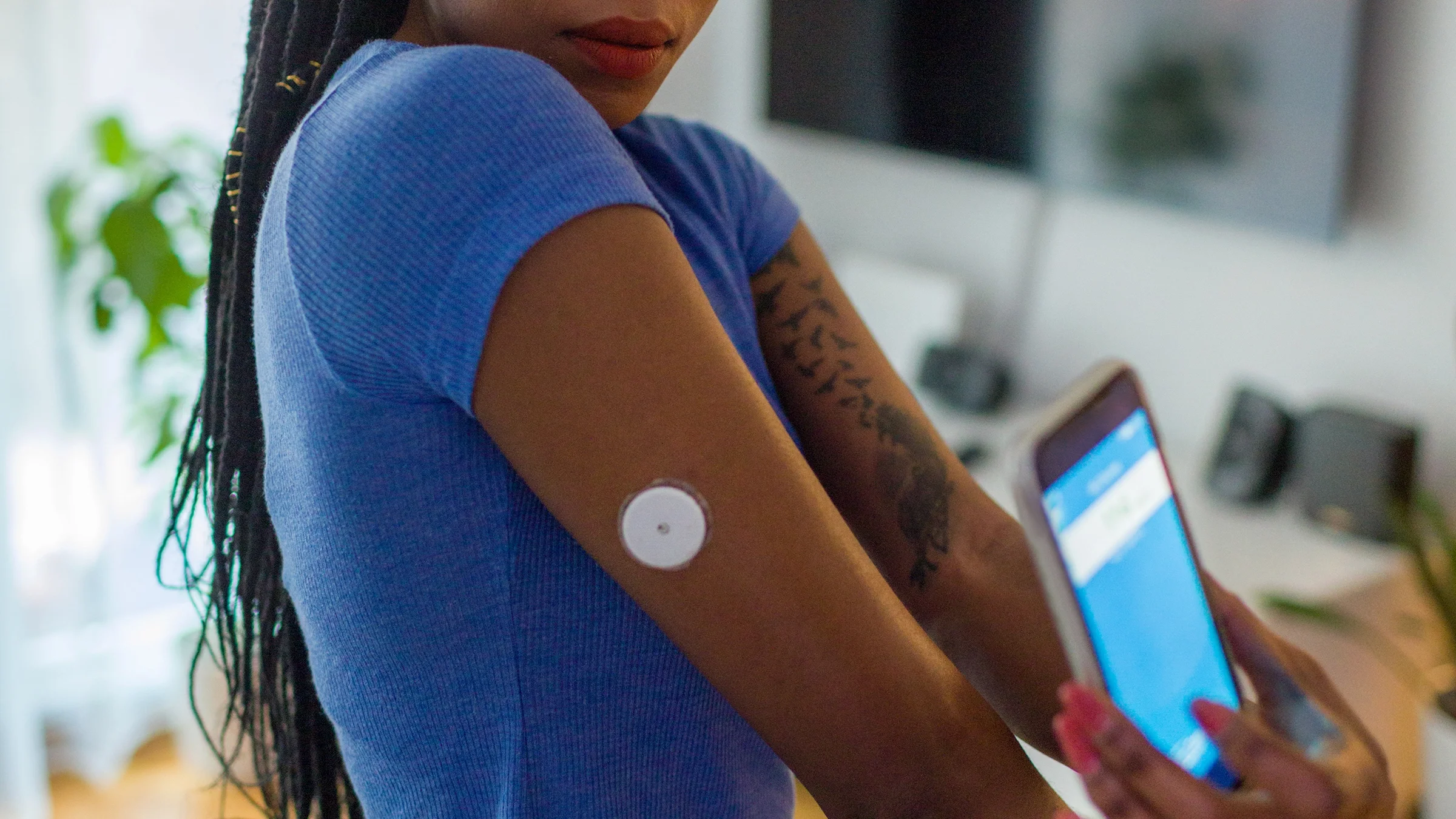Key takeaways:
Digital health is a broad term for technology used in healthcare and medicine. Digital health includes apps, devices, therapeutics, and telehealth.
Some digital health apps and devices are covered by insurance, and they may require a prescription.
Many states require insurance plans to cover telehealth services.
Technology has transformed many industries. Healthcare is one of them. In the past decade, many products, services, and apps have been developed to help people manage their health conditions.
Digital health is an umbrella term for technology used in healthcare and medicine. One aspect of digital health includes apps such as diet and exercise trackers. Another is devices with sensors such as continuous glucose monitors (CGMs), blood pressure monitors, and heart rate monitors. Digital therapeutics adjust treatments using data-driven, evidence-based software.
Digital health apps and devices can be game-changers for health management. But, they can't help you if they are unaffordable. In some cases, insurance may help foot the bill.
Some of these products are available over the counter. Others require prescriptions. Some may be covered by insurance plans.
Below, we explore the insurance coverage of digital health products and services.
How much does digital health cost without insurance?
The costs associated with digital health range from no cost to thousands of dollars. Some products are free, such as meditation and fitness apps that you can download on your smartphone. Others can cost hundreds of dollars and even more.
Smart inhalers — which help people with lung conditions track their use of prescription medication — range in price from $100 to more than $200. GoodRx can help you save money on these products. Manufacturers may offer discounts and patient assistance programs. Some of these devices also have additional monitoring fees.
Other digital health products can cost thousands of dollars. Continuous glucose monitors, which help people with diabetes track their blood sugar levels, can cost more than $1,000 in the first 3 months of use. These devices often require transmitters and receivers with an ongoing monthly cost for sensors. Manufacturers may offer discounts, copay assistance programs, and patient assistance programs depending on your insurance status.
Digital monitoring for blood sugar levels is more costly than manual monitoring, according to University of Chicago Medicine.
Read more like this
Explore these related articles, suggested for readers like you.
Does insurance cover digital health products and services?
Whether your health insurance will cover a digital health solution depends on the type of product or service and your plan. For example, continuous glucose monitors are covered by many commercial insurance plans and some Medicare Advantage plans.
Depending on your diabetes management plan and your coverage, you may qualify for a CGM with original Medicare and under Medicaid in your state. States continue to update their Medicaid plans to include CGMs and associated supplies, instead of only blood sugar meters.
A report by the American Diabetes Association found that those with commercial health insurance were more likely to have CGMs than people with Medicaid.
Even with insurance, CGM makers may offer discounts, copay assistance programs, and patient assistance programs that could reduce your out-of-pocket costs.
Some digital health solutions are backed by evidence that shows they are effective at helping to manage or treat conditions. Insurance companies may be more willing to pay for technology that reduces costs and improves outcomes, according to a report by Deloitte.
Telehealth, also known as telemedicine, is the digital health service most likely to be covered by insurance. When you have a virtual visit with a provider, you may still face out-of-pocket costs such as a deductible or copay, though.
Where are these digital health devices available?
Digital health devices can be accessed through many different avenues. Many of the digital health devices that are covered by insurance require prescriptions.
Some free health-monitoring apps can be downloaded for use on a smartphone, tablet, or computer. Other devices can be found over the counter in pharmacies and other retail stores. In some cases, you can order a digital health device directly from the manufacturer.
Can I get digital health tools over the counter?
Yes. Some digital health tools can be purchased without prescriptions. This is called direct-to-consumer digital health. These items include web-based apps to access services such as mental health counseling. Other tools include activity trackers that may help prevent heart disease or detect irregular heartbeats.
Telemedicine services that replace office visits also could be considered direct-to-consumer digital health.
While these tools can be convenient and expand access to healthcare, there are potential risks. Some researchers point out that consumers could be placing their trust in products that don’t work.
Do I need a prescription to get a digital app, therapeutic, or device?
Whether you need a prescription for a digital health tool depends on the product or service. Tools that track and provide information to your doctor, or digital therapeutics that adjust treatments, typically require prescriptions.
Also, products that collect personalized information and send it to your doctor are likely to require prescriptions. In these cases, you can't simply walk into a store and purchase the device.
Tools such as wellness apps, fitness programs, and meal trackers often can be purchased without a prescription. When you talk to your doctor about a digital app, therapeutic, or device, ask whether you need a prescription.
Does digital health include telehealth?
Telehealth is a broad term that may refer to many health-related technologies. Most often, telehealth means telemedicine, which is typically when patients have virtual visits with healthcare professionals.
Telehealth was expanded during the COVID-19 public health emergency. Telehealth use among Medicare-enrolled seniors skyrocketed during the first year of the pandemic.
Telehealth is the digital health service most likely to be covered by insurance. Medicare covers a range of telehealth services. Many states have adopted telemedicine options for Medicaid enrollees.
Most states and the District of Columbia require private insurance providers to cover telemedicine. Most insurance plans cover some form of telemedicine.
What else does digital health include?
Digital health contains a variety of technological tools to help you achieve your wellness goals. Digital health includes electronic health records that make it easier for healthcare providers to access your medical history and track your health conditions.
The term is also used to describe apps that help with general health goals such as fitness tracking, mindfulness, and medication adherence.
Digital health also includes digital medicine. Digital medicine tools collect health data and provide information to your medical provider that can help with your care. Digital medicine solutions have scientific evidence that proves that they perform as claimed.
Examples of digital medicine include smartwatches that track your heart rhythm, smart insulin pens, smart inhalers, and continuous glucose monitors.
Digital therapeutics — often referred to as DTx — are another cutting-edge form of digital health. DTx provides more specialized care than digital medicine. Digital therapeutics tools use evidence-based software programs to treat, manage, and prevent certain conditions.
As with digital medicine, digital therapeutics have evidence to support their claims of performance. Examples include apps that help people with diabetes determine how much insulin they need at a given time or virtual-reality systems for chronic pain treatment.
The bottom line
Digital health apps and devices can make staying healthy and managing health conditions easier. Digital health solutions may be available over the counter, but some require a prescription. Your health insurance may cover a digital health tool depending on the product or service and your plan. Digital health includes telehealth, which usually refers to virtual visits with a healthcare provider. Telehealth is the digital health service most likely to be covered by insurance.

Why trust our experts?


References
American Diabetes Association. (2021). Health equity and diabetes technology: A study of access to continuous glucose monitors by payer and race executive summary.
Cohen, A. B., et al. (2020). Digital-to-consumer digital health. The Lancet Digital Health.
Deloitte. (2019). Digital therapeutics: Improving patient outcomes through convergence.
Medicaid.gov. (n.d.). Medicaid state plan amendments.
Medicaid.gov. (n.d.). Telemedicine.
Medicare.gov. (n.d.). Therapeutic continuous glucose monitors.
Miao, B. Y., et al. (2022). Open challenges in developing digital therapeutics in the United States. PLOS Digital Health.
Telehealth.HHS.gov. (2021). Private insurance coverage for telehealth. Health Resources & Services Administration.
Wehrwein, P. (2021). Digital therapeutics shaping the future of care. Managed Healthcare Executive.
Wood, M. (2018). Continuous glucose monitors proven cost-effective, add to quality of life for diabetics. University of Chicago Medicine.

















